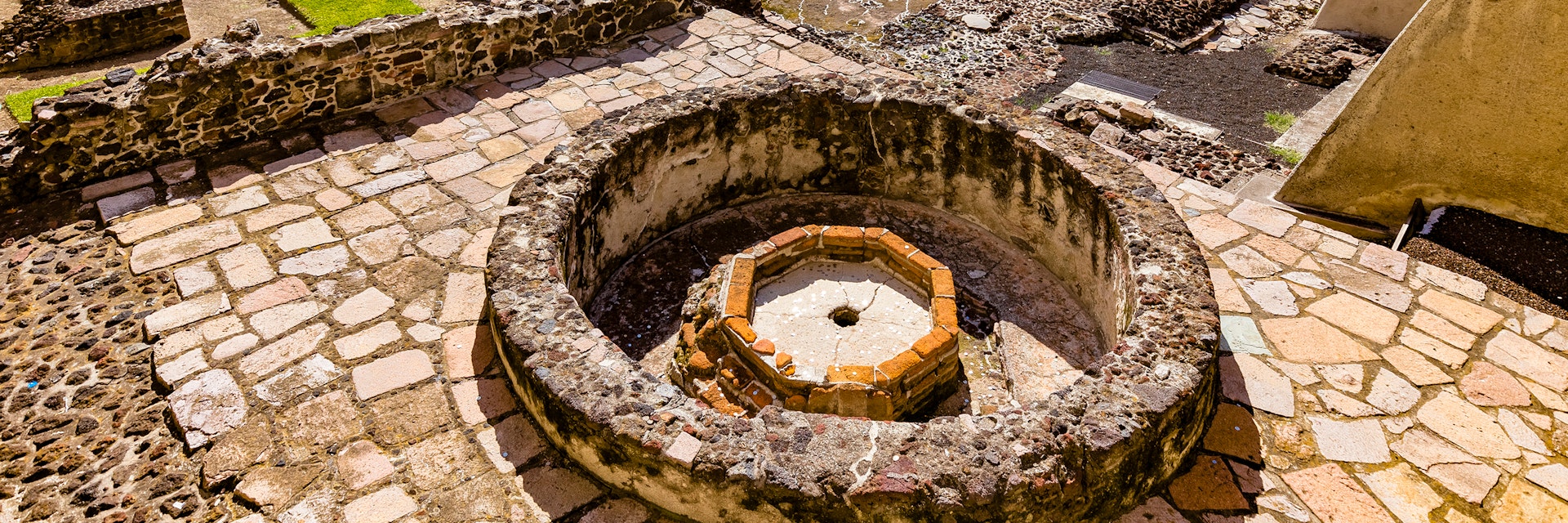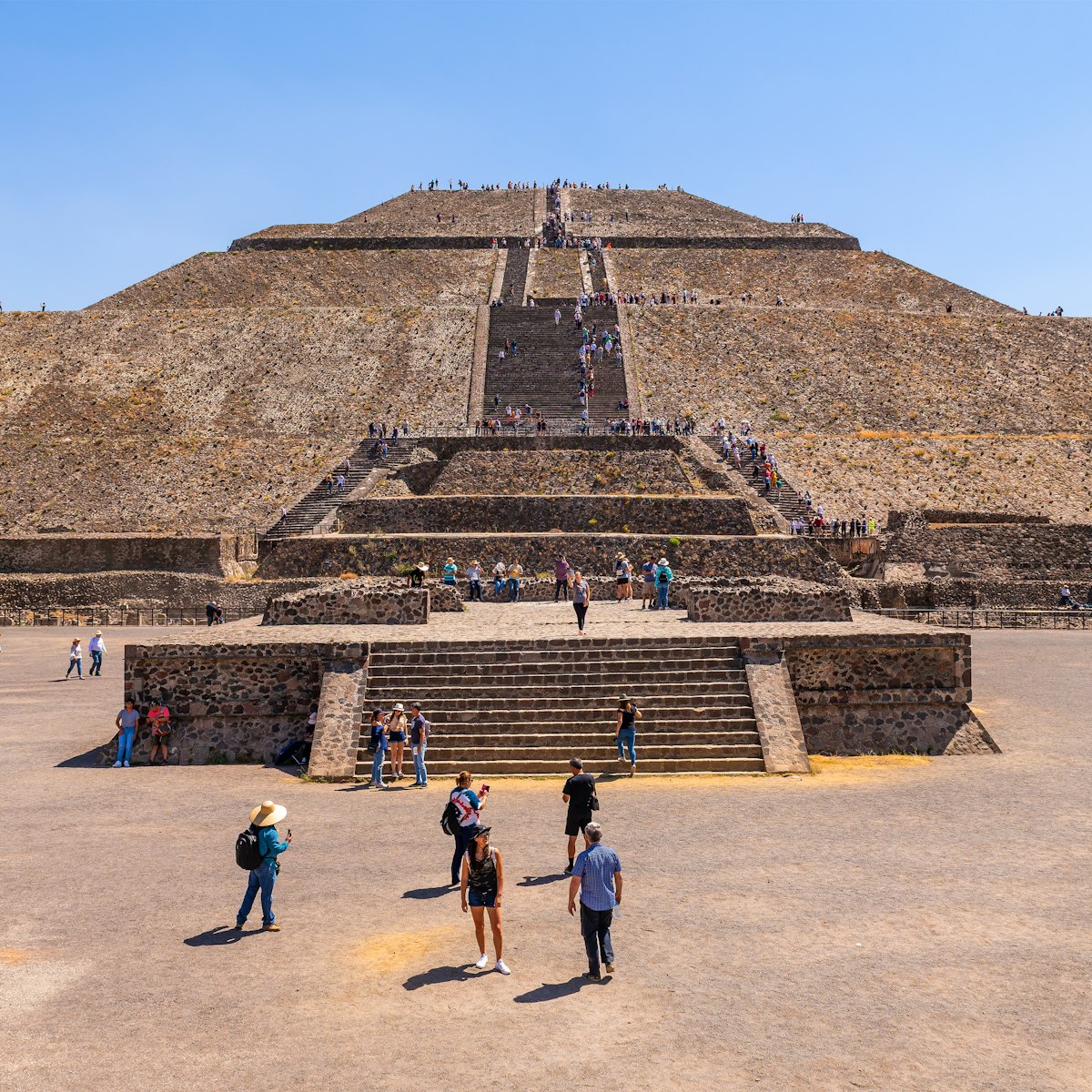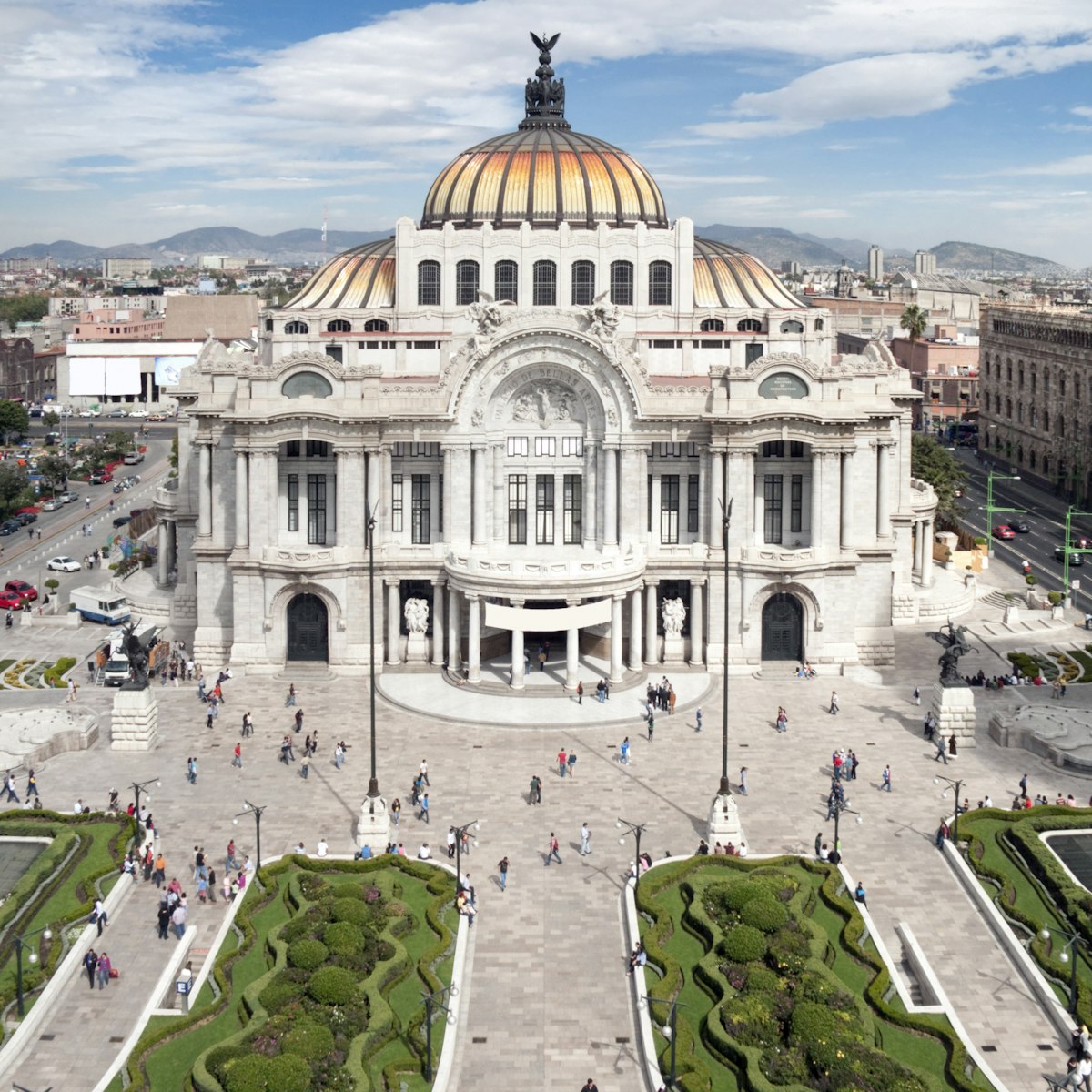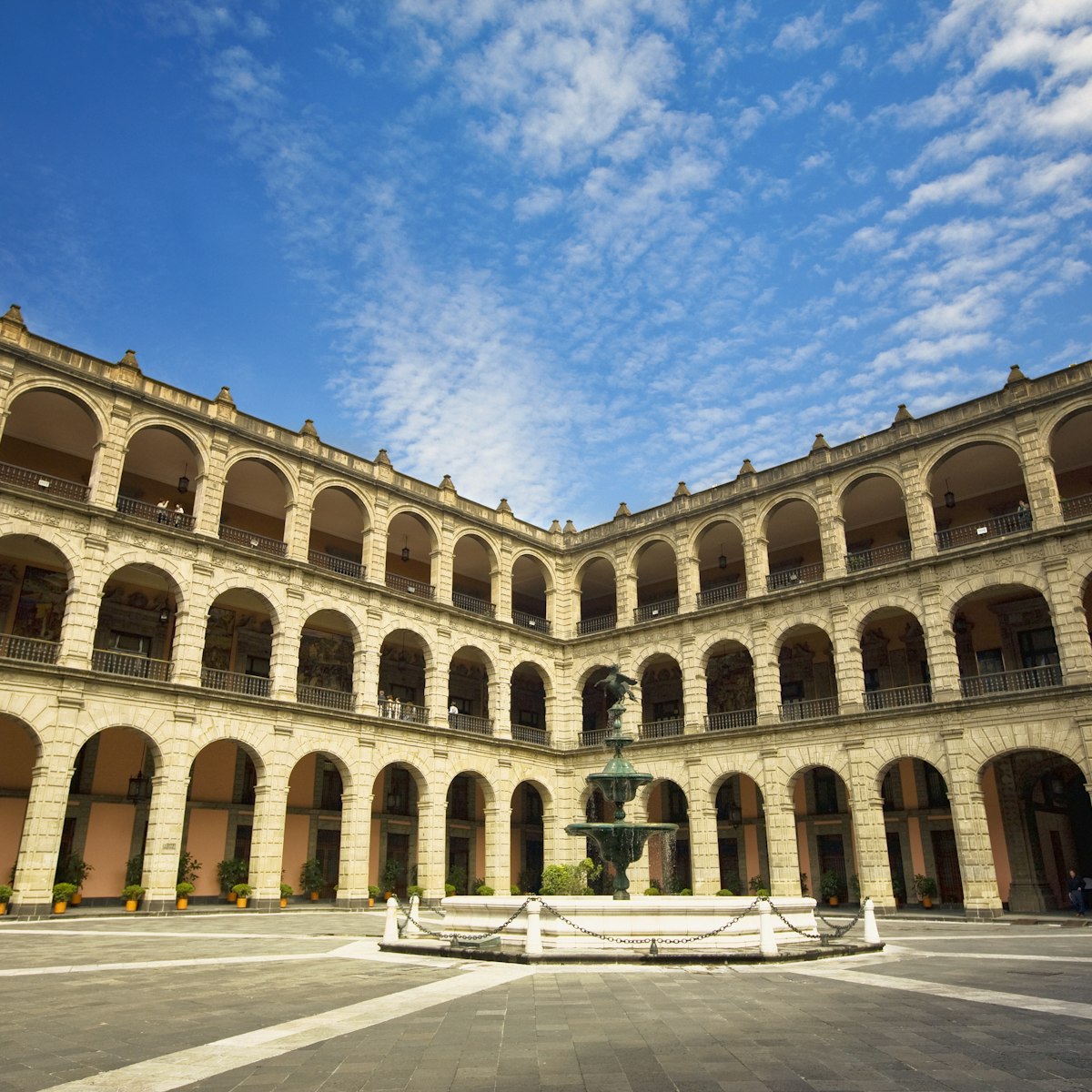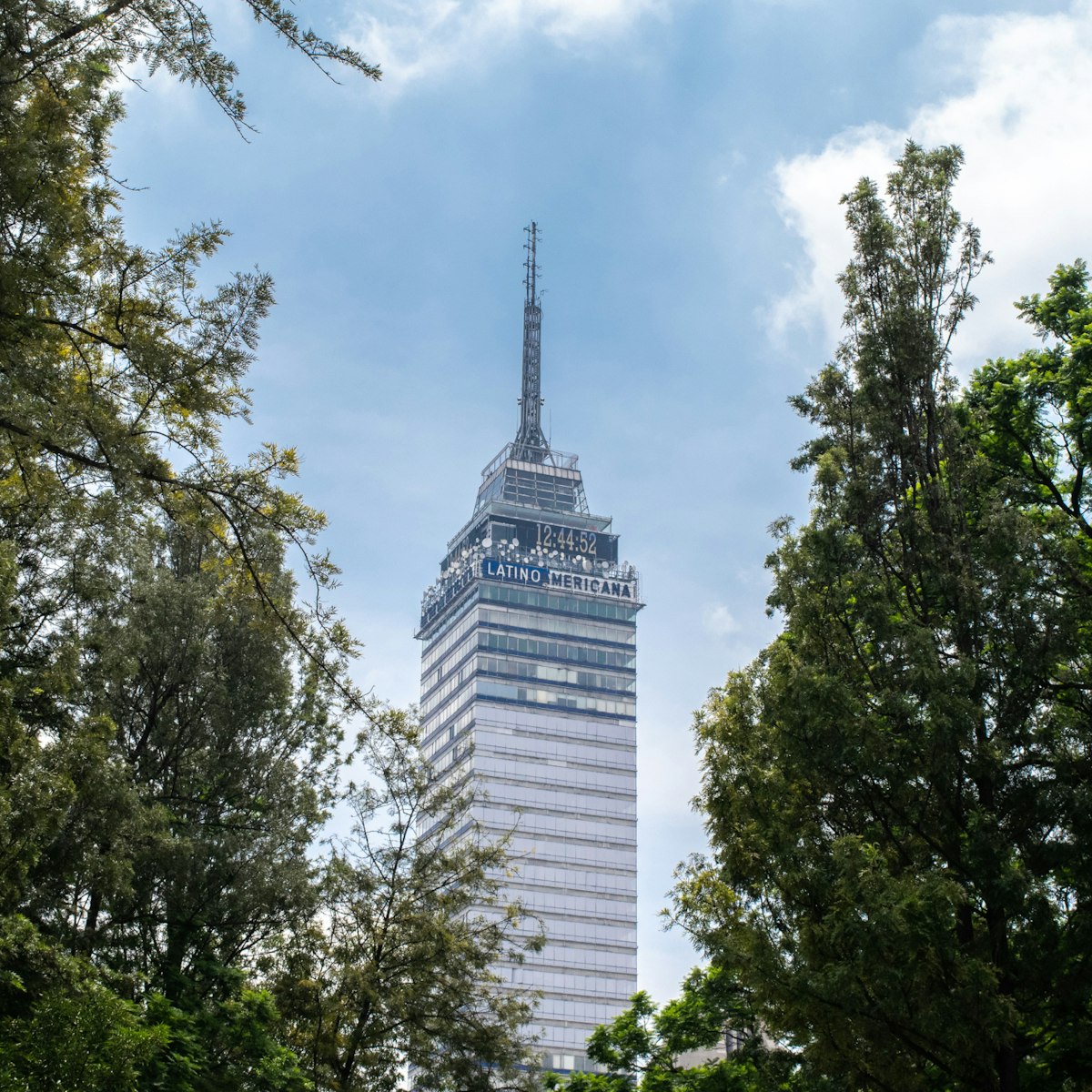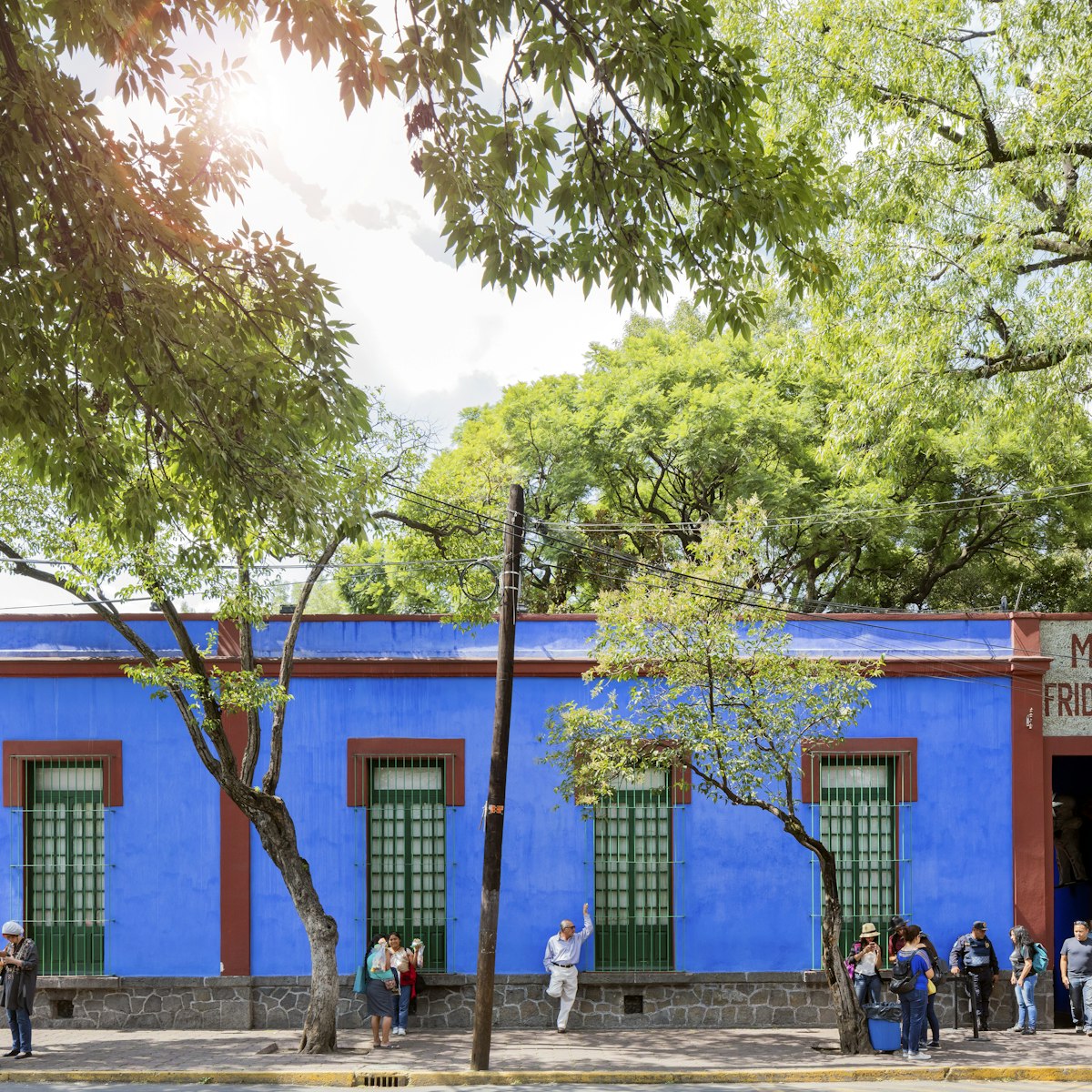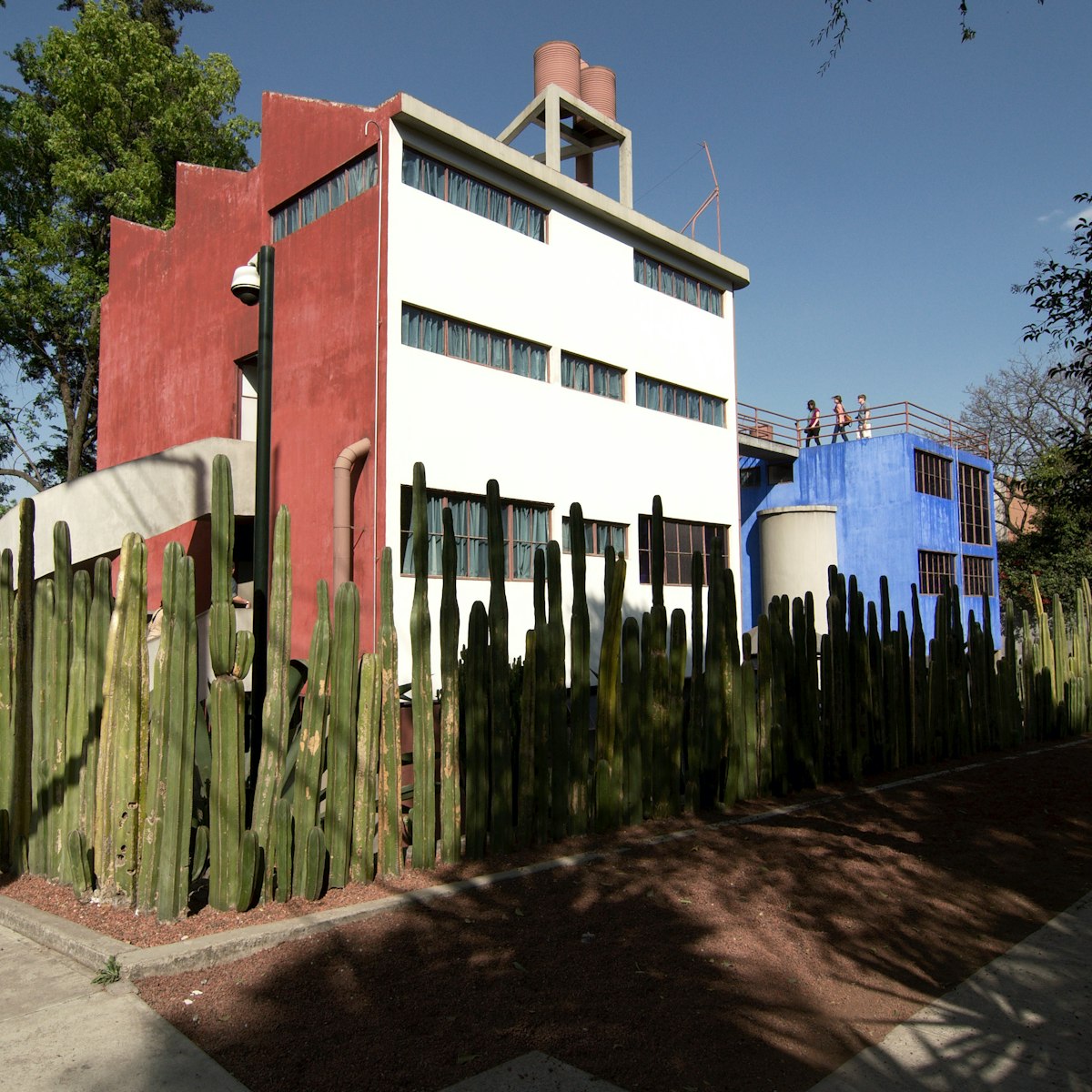Before the Spaniards demolished it, the Aztec 'Great Temple' Teocalli of Tenochtitlán covered the site where the cathedral now stands, as well as the blocks to its north and east. It wasn’t until 1978, after electricity workers happened on an 8-tonne stone-disc carving of the Aztec goddess Coyolxauhqui, that the decision was taken to demolish colonial buildings and excavate the Templo Mayor.
The temple is thought to be on the exact spot where the Aztecs saw their symbolic eagle perching on a cactus with a snake (though some say Spaniards added this serpent image) in its beak – the symbol of Mexico today. In Aztec belief this was, literally, the center of the universe.
Like other sacred buildings in Tenochtitlán, the temple was enlarged several times, with each rebuilding accompanied by the sacrifice of captured warriors. What we see today are sections of the temple’s seven different phases. At the center is a platform dating from about 1400. On its southern half, a sacrificial stone stands in front of a shrine to Huizilopochtli, the Aztec war god. On the northern half is a chac-mool (a Maya reclining figure) before a shrine to the water god, Tláloc. By the time the Spanish arrived, a 40m-high double pyramid towered above this spot, with steep twin stairways climbing to shrines of the two gods.
The entrance to the temple site and museum is east of the cathedral, across the hectic Plaza del Templo Mayor, where it's possible to see much of the exterior of the Templo without entering. Authorized tour guides (with Sectur ID) offer their services by the entrance.
The on-site Museo del Templo Mayor (included in the site’s admission price) houses a model of Tenochtitlán and artifacts from the site, and gives a good overview of Aztec, aka Mexica, civilization, though with little signage in English, unlike the ruins. Pride of place is given to the great wheel-like stone of Coyolxauhqui (She of Bells on Her Cheek), best viewed from the top-floor vantage point. She is shown decapitated, the result of her murder by Huitzilopochtli (her brother, the god of war, the sun and human sacrifice), who also killed his 400 brothers en route to becoming top god.
Ongoing excavation continues to turn up major pieces. Just west of the temple, a monolithic stone carved with the image of Tlaltecuhtli, the goddess of earth fertility, was unearthed in October 2006 and is now prominently displayed on the museum's 1st floor.
Another key find was made in 2011 when a ceremonial platform dating from 1469 was uncovered. Based on historical documents, archaeologists believe the 15m structure was used to cremate Aztec rulers. A dig also turned up what archaeologists believe is the trunk of a sacred tree found at a newly discovered burial site at the foot of the temple. In 2017 a tower 6m in diameter made from over 650 human skulls was found nearby, believed to be Huey Tzompantli, mentioned by Spanish conquistadors but undiscovered until now. Most surprisingly, the remains of the sacrificed included women and children. Then in 2019, two sacrificial burial sites were uncovered – a boy dressed as Huitzilopochtli, and a jaguar in warrior-garb – giving hope to finding royal Aztec tombs, which have yet to be found despite decades of excavation.
A newer entrance hall open to the public displays objects discovered over four years of the hall's excavation – funerary objects, bones, Colonial-era fine china and pre-Hispanic structures of Cuauhxicalco (the place of the eagle vessel) – keeping Templo Mayor continually intriguing even for return visitors.
